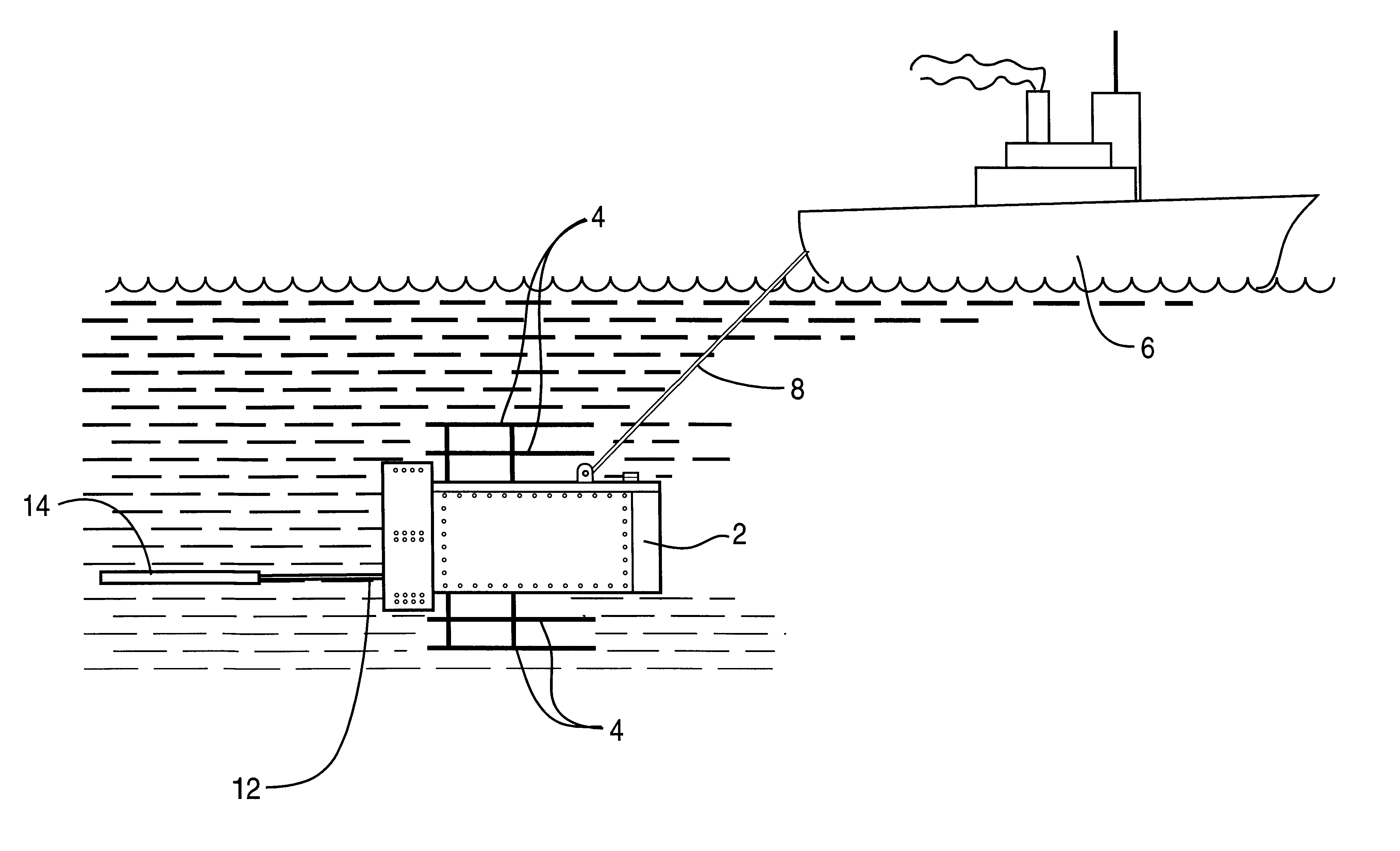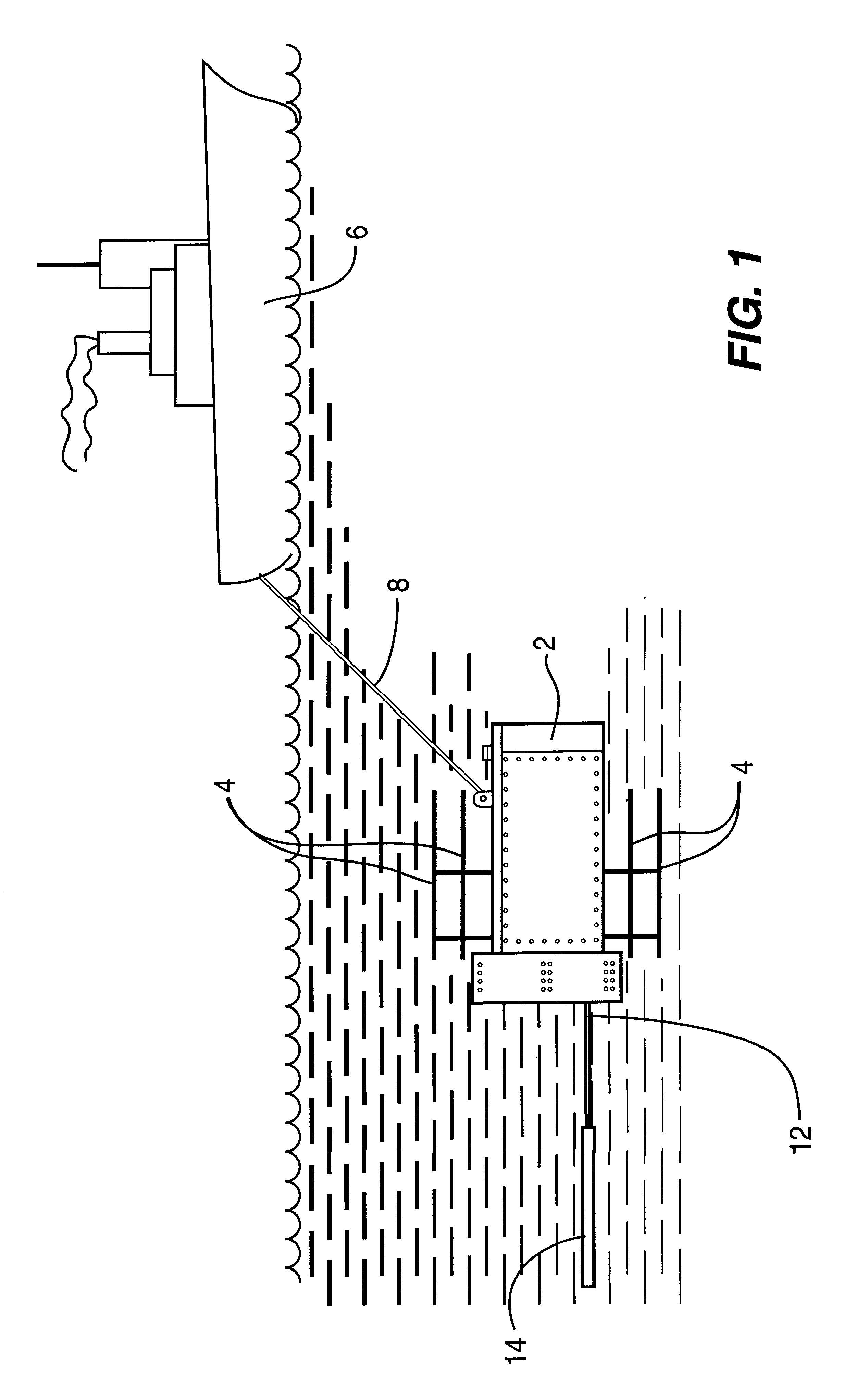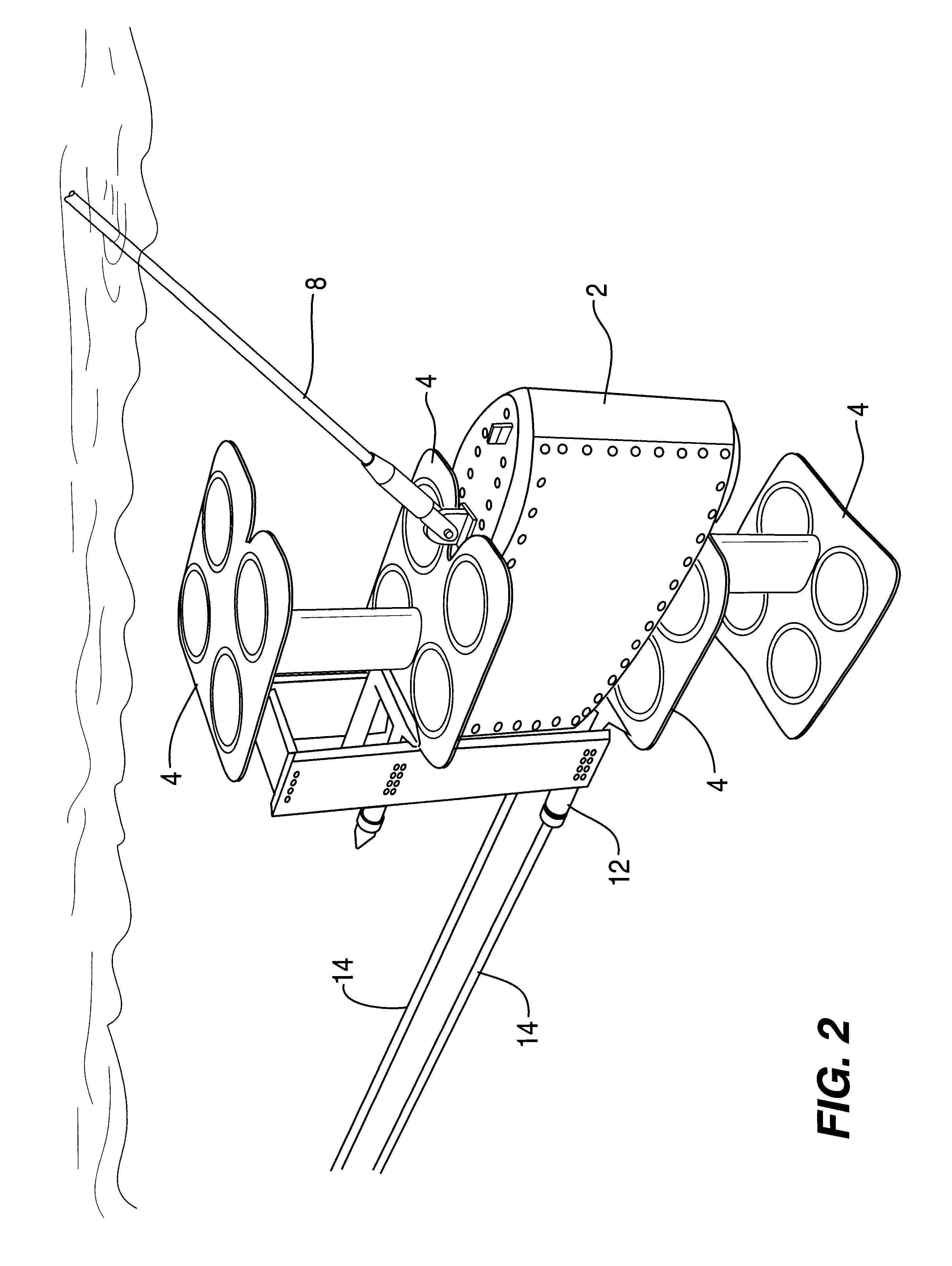Place calibration of sonar receive array
a sonar and receive array technology, applied in the field of sonar receive arrays, can solve the problems of inability to change the hydrophone characteristics of hydrophones after deployment of the array at sea, the detection capabilities of individual hydrophones in the towed array may unpredictably vary, and the calibration technique is extremely tedious
- Summary
- Abstract
- Description
- Claims
- Application Information
AI Technical Summary
Benefits of technology
Problems solved by technology
Method used
Image
Examples
Embodiment Construction
The tow body having acoustic projector and two receive arrays of 48 hydrophones each shown in FIG. 2 is deployed from a ship proceeding at a speed of 4 to 8 knots at an ocean location having a minimum depth of 600 meters. The cable scope is 300 meters to minimize reflections and ship noise. Transmit on one forward projector stave only. Transmission is at a level 3 dB below saturation measured at hydrophone No. 48 and No. 96, i.e. the closest hydrophones. All hydrophone data is decimated. The sample rate in this example is 512 samples per second.
Physical conditions of the projector and the arrays:
Forward Projector to first hydrophone distance is 7.85 ft.=8.35 dB spreading loss. Acoustic center of all projectors to forward hydrophone=7.49 ft.=7.9576 dB spreading loss.
Forward Projector to Aft Hydrophone distance=74.85 ft.=27.94 dB spreading loss. Total spreading loss from array end-to-end is 19.59 dB.
Distance to hydrophone No. 24 (mid array)=42.054 ft=22.93 dB. Spreading loss to Hydrop...
PUM
 Login to View More
Login to View More Abstract
Description
Claims
Application Information
 Login to View More
Login to View More - R&D
- Intellectual Property
- Life Sciences
- Materials
- Tech Scout
- Unparalleled Data Quality
- Higher Quality Content
- 60% Fewer Hallucinations
Browse by: Latest US Patents, China's latest patents, Technical Efficacy Thesaurus, Application Domain, Technology Topic, Popular Technical Reports.
© 2025 PatSnap. All rights reserved.Legal|Privacy policy|Modern Slavery Act Transparency Statement|Sitemap|About US| Contact US: help@patsnap.com



